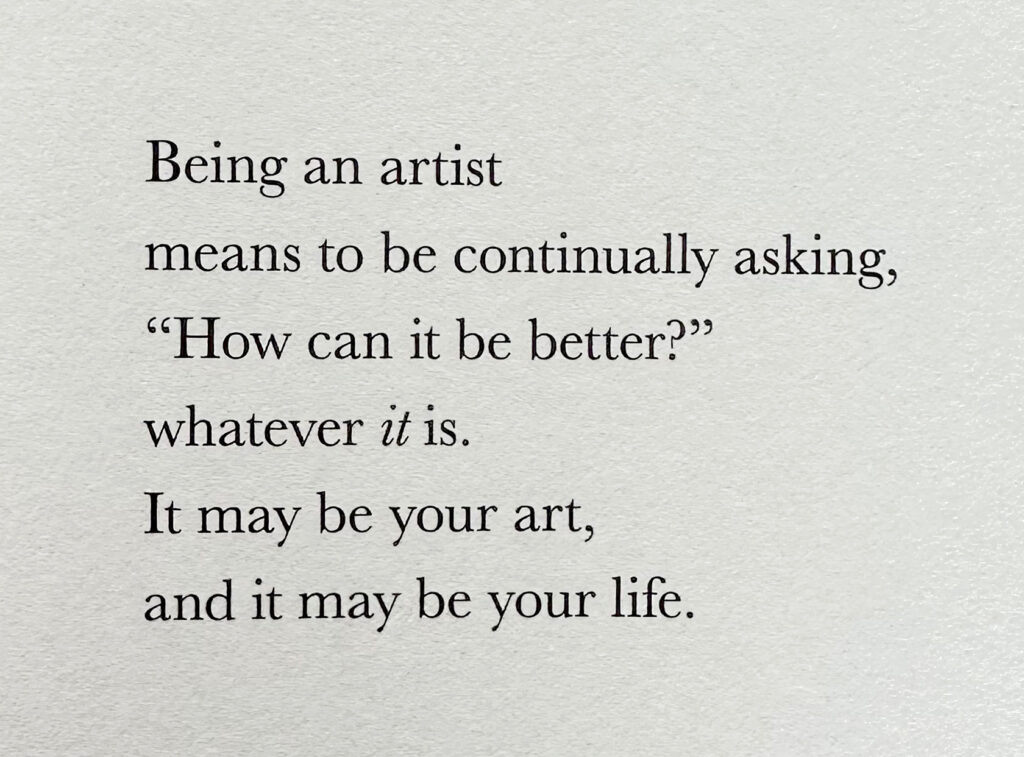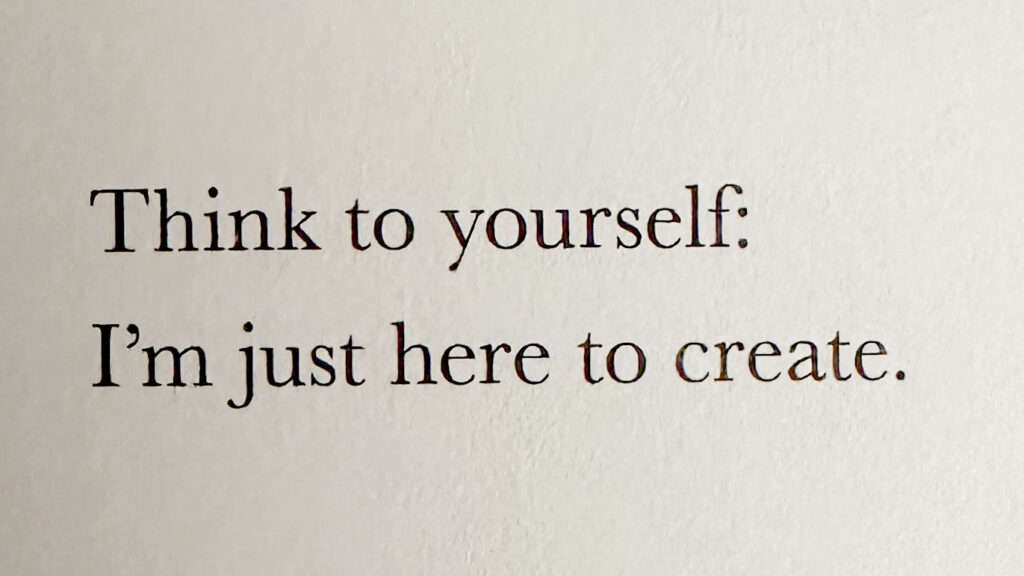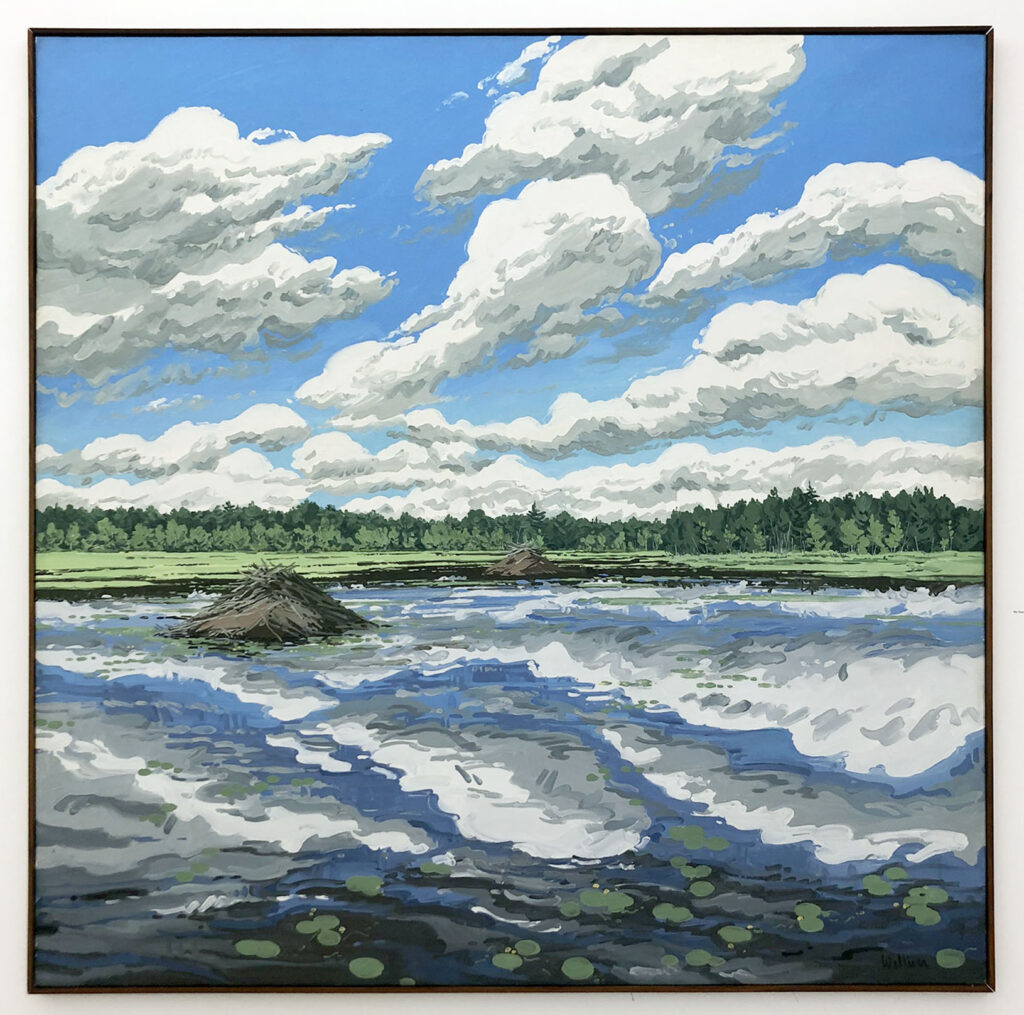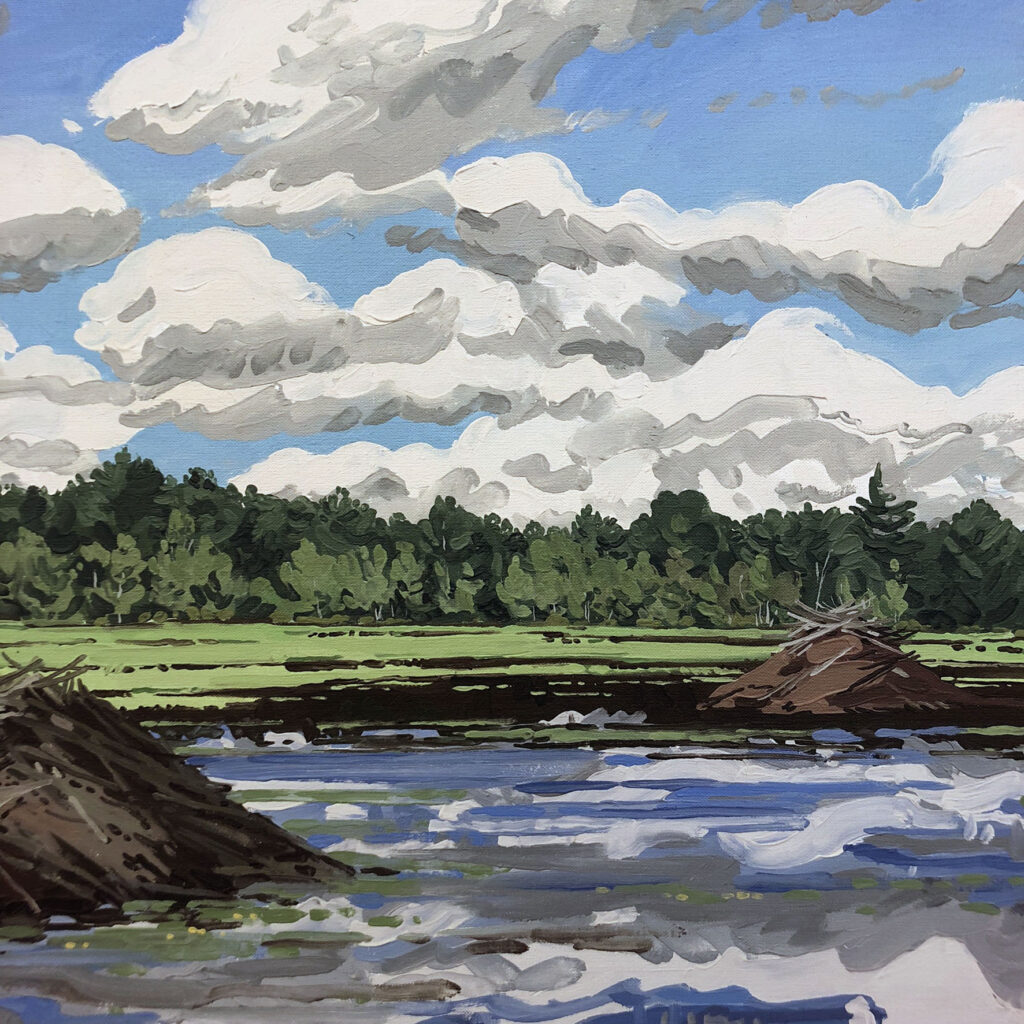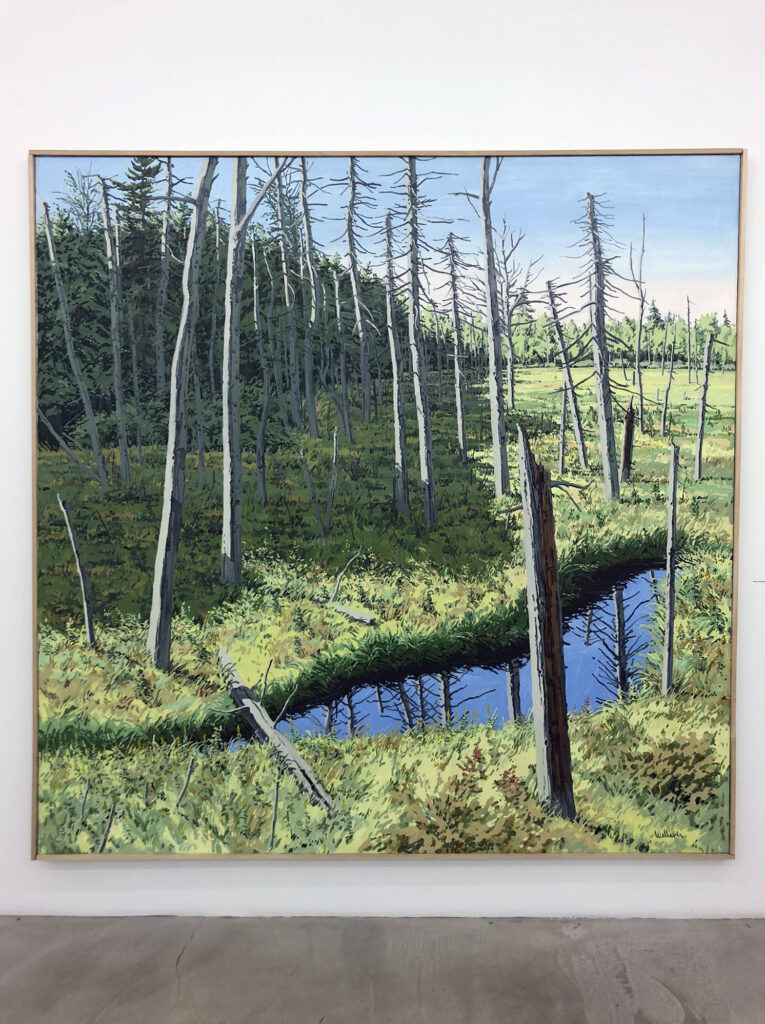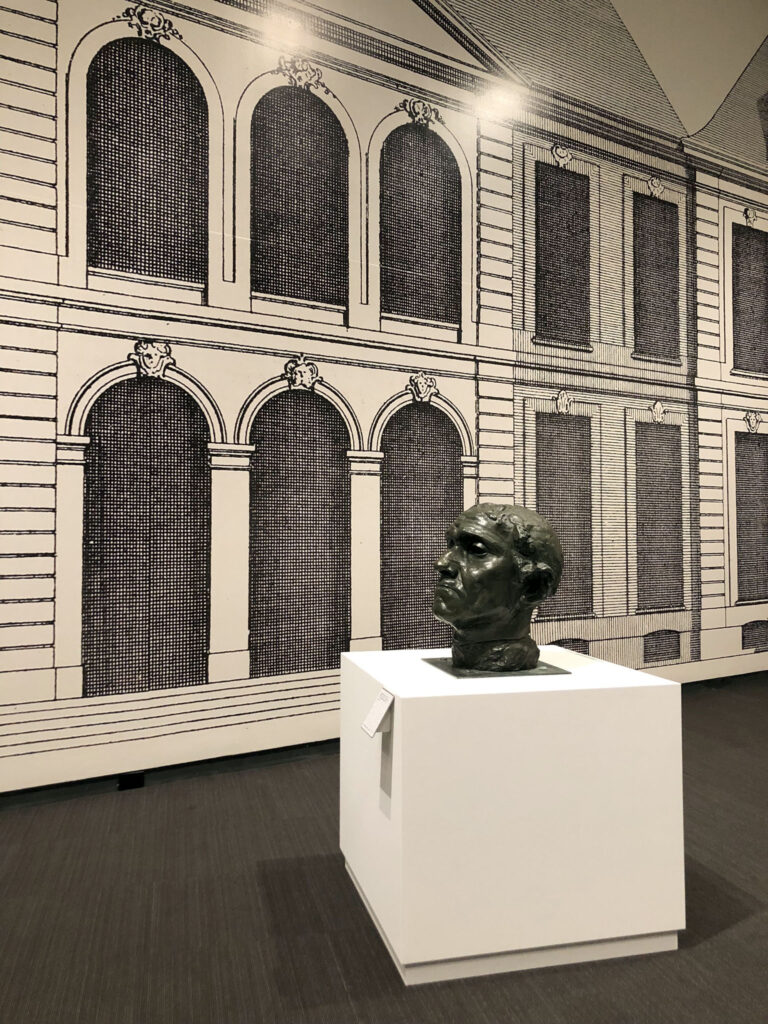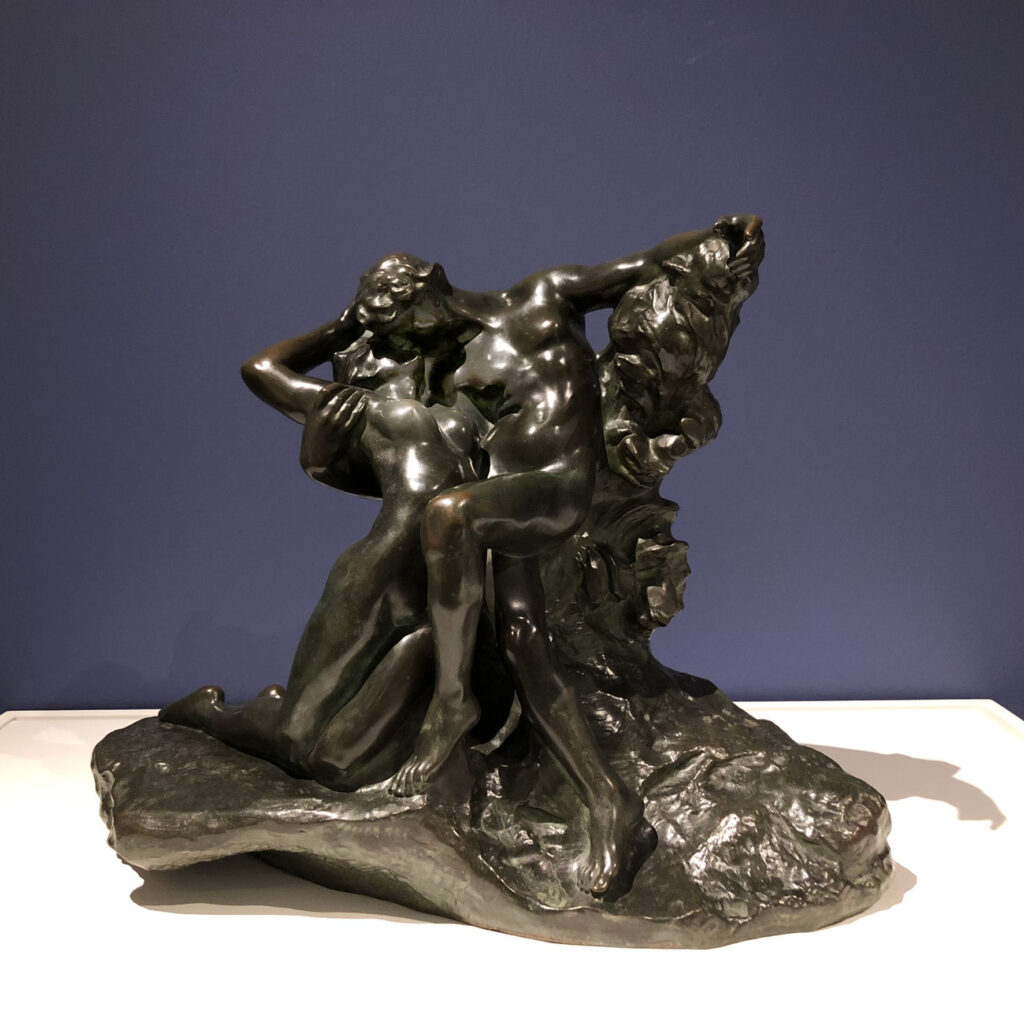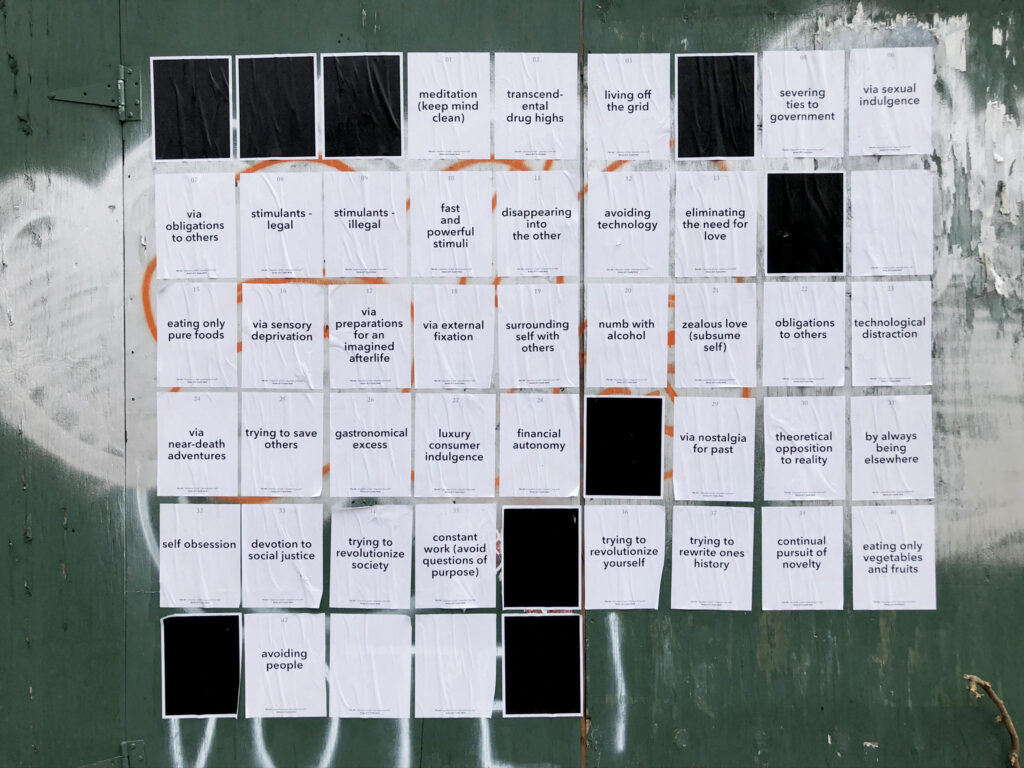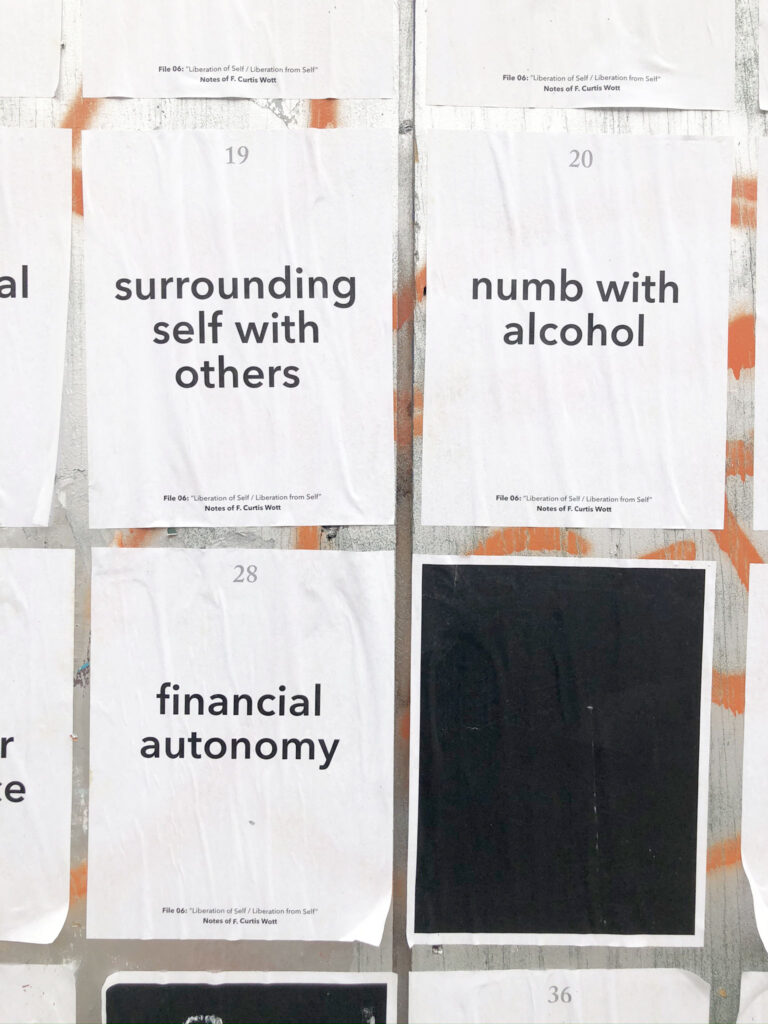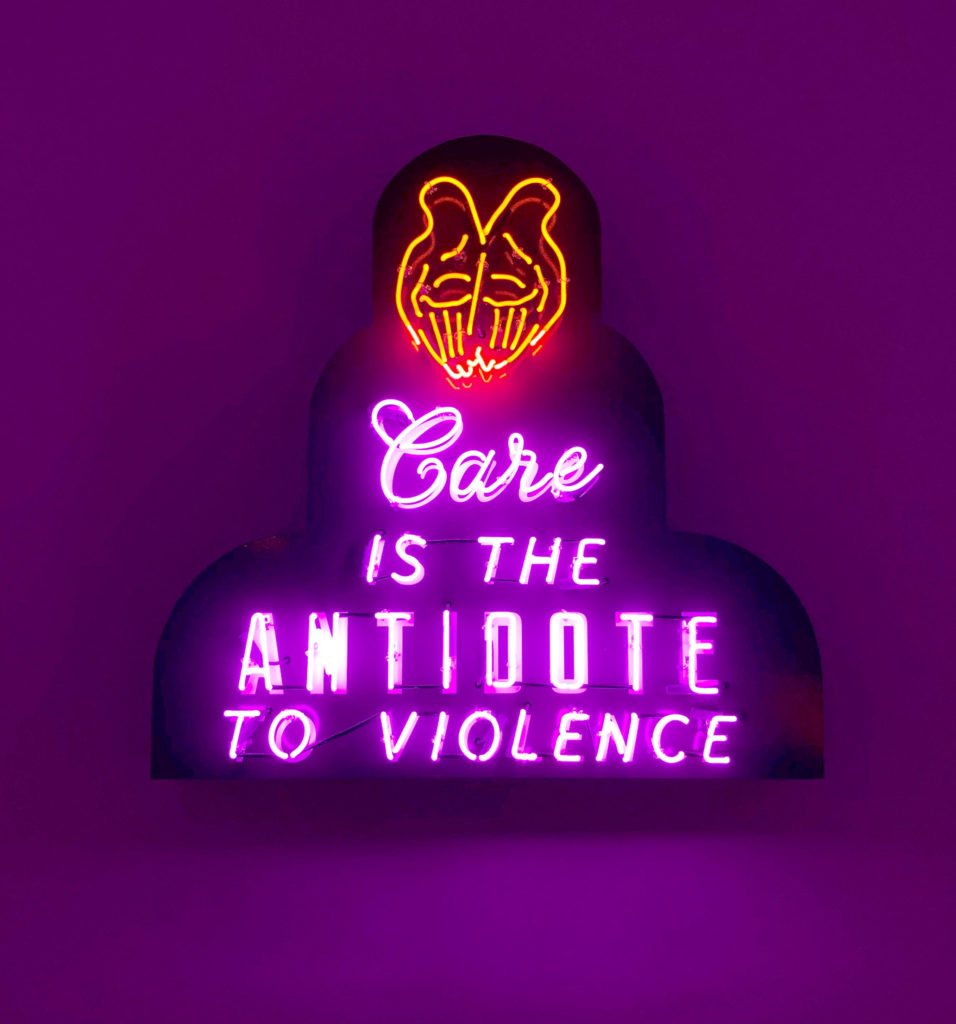I know it’s a bad title
but I’m giving it to myself as a gift
on a day nearly canceled by sunlight
when the entire hill is approaching
the ideal of Virginia
brochured with goldenrod and loblolly
and I think “at least I have not woken up
with a bloody knife in my hand”
by then having absently wandered
one hundred yards from the house
while still seated in this chair
with my eyes closed.
It is a certain hill
the one I imagine when I hear the word “hill”
and if the apocalypse turns out
to be a world-wide nervous breakdown
if our five billion minds collapse at once
well I’d call that a surprise ending
and this hill would still be beautiful
a place I wouldn’t mind dying
alone or with you.
I am trying to get at something
and I want to talk very plainly to you
so that we are both comforted by the honesty.
You see there is a window by my desk
I stare out when I am stuck
though the outdoors has rarely inspired me to write
and I don’t know why I keep staring at it.
My childhood hasn’t made good material either
mostly being a mulch of white minutes
with a few stand out moments,
popping tar bubbles on the driveway in the summer
a certain amount of pride at school
everytime they called it “our sun”
and playing football when the only play
was “go out long” are what stand out now.
If squeezed for more information
I can remember old clock radios
with flipping metal numbers
and an entree called Surf and Turf.
As a way of getting in touch with my origins
every night I set the alarm clock
for the time I was born so that waking up
becomes a historical reenactment and the first thing I do
is take a reading of the day and try to flow with it like
when you’re riding a mechanical bull and you strain to learn
the pattern quickly so you don’t inadverantly resist it.
II two
I can’t remember being born
and no one else can remember it either
even the doctor who I met years later
at a cocktail party.
It’s one of the little disappointments
that makes you think about getting away
going to Holly Springs or Coral Gables
and taking a room on the square
with a landlady whose hands are scored
by disinfectant, telling the people you meet
that you are from Alaska, and listen
to what they have to say about Alaska
until you have learned much more about Alaska
than you ever will about Holly Springs or Coral Gables.
Sometimes I am buying a newspaper
in a strange city and think
“I am about to learn what it’s like to live here.”
Oftentimes there is a news item
about the complaints of homeowners
who live beside the airport
and I realize that I read an article
on this subject nearly once a year
and always receive the same image.
I am in bed late at night
in my house near the airport
listening to the jets fly overhead
a strange wife sleeping beside me.
In my mind, the bedroom is an amalgamation
of various cold medicine commercial sets
(there is always a box of tissue on the nightstand).
I know these recurring news articles are clues,
flaws in the design though I haven’t figured out
how to string them together yet,
but I’ve begun to notice that the same people
are dying over and over again,
for instance Minnie Pearl
who died this year
for the fourth time in four years.
III three
Today is the first day of Lent
and once again I’m not really sure what it is.
How many more years will I let pass
before I take the trouble to ask someone?
It reminds of this morning
when you were getting ready for work.
I was sitting by the space heater
numbly watching you dress
and when you asked why I never wear a robe
I had so many good reasons
I didn’t know where to begin.
If you were cool in high school
you didn’t ask too many questions.
You could tell who’d been to last night’s
big metal concert by the new t-shirts in the hallway.
You didn’t have to ask
and that’s what cool was:
the ability to deduct
to know without asking.
And the pressure to simulate coolness
means not asking when you don’t know,
which is why kids grow ever more stupid.
A yearbook’s endpages, filled with promises
to stay in touch, stand as proof of the uselessness
of a teenager’s promise. Not like I’m dying
for a letter from the class stoner
ten years on but…
Do you remember the way the girls
would call out “love you!”
conveniently leaving out the “I”
as if they didn’t want to commit
to their own declarations.
I agree that the “I” is a pretty heavy concept
and hope you won’t get uncomfortable
if I should go into some deeper stuff here.
IV four
There are things I’ve given up on
like recording funny answering machine messages.
It’s part of growing older
and the human race as a group
has matured along the same lines.
It seems our comedy dates the quickest.
If you laugh out loud at Shakespeare’s jokes
I hope you won’t be insulted
if I say you’re trying too hard.
Even sketches from the original Saturday Night Live
seem slow-witted and obvious now.
It’s just that our advances are irrepressible.
Nowadays little kids can’t even set up lemonade stands.
It makes people too self-conscious about the past,
though try explaining that to a kid.
I’m not saying it should be this way.
All this new technology
will eventually give us new feelings
that will never completely displace the old ones
leaving everyone feeling quite nervous
and split in two.
We will travel to Mars
even as folks on Earth
are still ripping open potato chip
bags with their teeth.
Why? I don’t have the time or intelligence
to make all the connections
like my friend Gordon
(this is a true story)
who grew up in Braintree Massachusetts
and had never pictured a brain snagged in a tree
until I brought it up.
He’d never broken the name down to its parts.
By then it was too late.
He had moved to Coral Gables.
V five
The hill out my window is still looking beautiful
suffused in a kind of gold national park light
and it seems to say,
I’m sorry the world could not possibly
use another poem about Orpheus
but I’m available if you’re not working
on a self-portrait or anything.
I’m watching my dog have nightmares,
twitching and whining on the office floor
and I try to imagine what beast
has cornered him in the meadow
where his dreams are set.
I’m just letting the day be what it is:
a place for a large number of things
to gather and interact —
not even a place but an occasion
a reality for real things.
Friends warned me not to get too psychedelic
or religious with this piece:
“They won’t accept it if it’s too psychedelic
or religious,” but these are valid topics
and I’m the one with the dog twitching on the floor
possibly dreaming of me
that part of me that would beat a dog
for no good reason
no reason that a dog could see.
I am trying to get at something so simple
that I have to talk plainly
so the words don’t disfigure it
and if it turns out that what I say is untrue
then at least let it be harmless
like a leaky boat in the reeds
that is bothering no one.
VI six
I can’t trust the accuracy of my own memories,
many of them having blended with sentimental
telephone and margarine commercials
plainly ruined by Madison Avenue
though no one seems to call the advertising world
“Madison Avenue” anymore. Have they moved?
Let’s get an update on this.
But first I have some business to take care of.
I walked out to the hill behind our house
which looks positively Alaskan today
and it would be easier to explain this
if I had a picture to show you
but I was with our young dog
and he was running through the tall grass
like running through the tall grass
is all of life together
until a bird calls or he finds a beer can
and that thing fills all the space in his head.
You see,
his mind can only hold one thought at a time
and when he finally hears me call his name
he looks up and cocks his head
and for a single moment
my voice is everything:
Self-portrait at 28.

